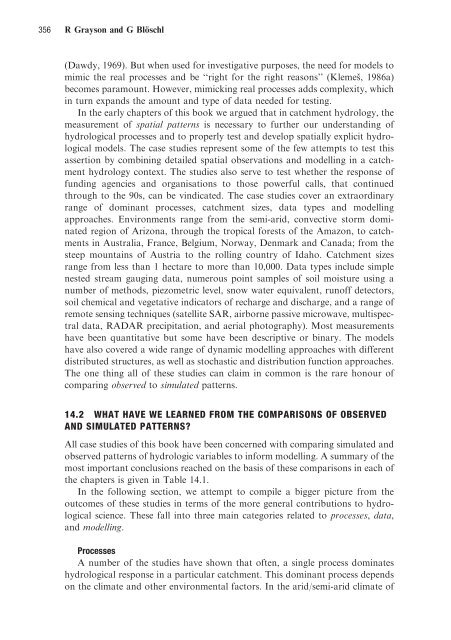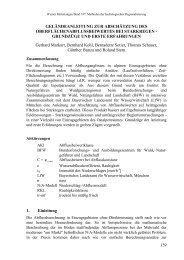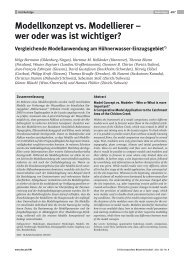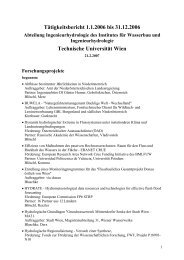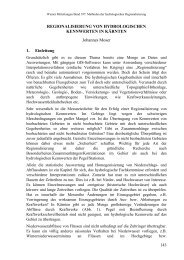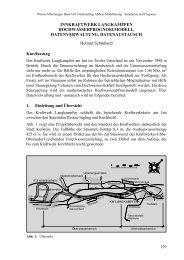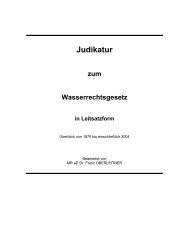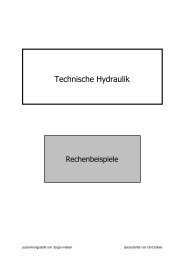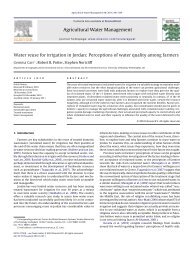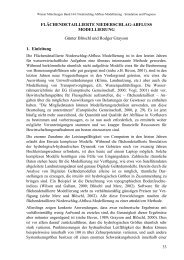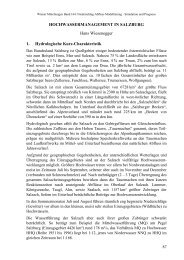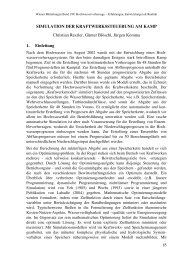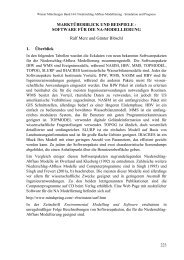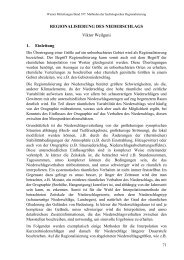Summary of Pattern Comparison and Concluding Remarks
Summary of Pattern Comparison and Concluding Remarks
Summary of Pattern Comparison and Concluding Remarks
You also want an ePaper? Increase the reach of your titles
YUMPU automatically turns print PDFs into web optimized ePapers that Google loves.
356 R Grayson <strong>and</strong> G Blo¨ schl<br />
(Dawdy, 1969). But when used for investigative purposes, the need for models to<br />
mimic the real processes <strong>and</strong> be ‘‘right for the right reasons’’ (Klemesˇ , 1986a)<br />
becomes paramount. However, mimicking real processes adds complexity, which<br />
in turn exp<strong>and</strong>s the amount <strong>and</strong> type <strong>of</strong> data needed for testing.<br />
In the early chapters <strong>of</strong> this book we argued that in catchment hydrology, the<br />
measurement <strong>of</strong> spatial patterns is necessary to further our underst<strong>and</strong>ing <strong>of</strong><br />
hydrological processes <strong>and</strong> to properly test <strong>and</strong> develop spatially explicit hydrological<br />
models. The case studies represent some <strong>of</strong> the few attempts to test this<br />
assertion by combining detailed spatial observations <strong>and</strong> modelling in a catchment<br />
hydrology context. The studies also serve to test whether the response <strong>of</strong><br />
funding agencies <strong>and</strong> organisations to those powerful calls, that continued<br />
through to the 90s, can be vindicated. The case studies cover an extraordinary<br />
range <strong>of</strong> dominant processes, catchment sizes, data types <strong>and</strong> modelling<br />
approaches. Environments range from the semi-arid, convective storm dominated<br />
region <strong>of</strong> Arizona, through the tropical forests <strong>of</strong> the Amazon, to catchments<br />
in Australia, France, Belgium, Norway, Denmark <strong>and</strong> Canada; from the<br />
steep mountains <strong>of</strong> Austria to the rolling country <strong>of</strong> Idaho. Catchment sizes<br />
range from less than 1 hectare to more than 10,000. Data types include simple<br />
nested stream gauging data, numerous point samples <strong>of</strong> soil moisture using a<br />
number <strong>of</strong> methods, piezometric level, snow water equivalent, run<strong>of</strong>f detectors,<br />
soil chemical <strong>and</strong> vegetative indicators <strong>of</strong> recharge <strong>and</strong> discharge, <strong>and</strong> a range <strong>of</strong><br />
remote sensing techniques (satellite SAR, airborne passive microwave, multispectral<br />
data, RADAR precipitation, <strong>and</strong> aerial photography). Most measurements<br />
have been quantitative but some have been descriptive or binary. The models<br />
have also covered a wide range <strong>of</strong> dynamic modelling approaches with different<br />
distributed structures, as well as stochastic <strong>and</strong> distribution function approaches.<br />
The one thing all <strong>of</strong> these studies can claim in common is the rare honour <strong>of</strong><br />
comparing observed to simulated patterns.<br />
14.2 WHAT HAVE WE LEARNED FROM THE COMPARISONS OF OBSERVED<br />
AND SIMULATED PATTERNS?<br />
All case studies <strong>of</strong> this book have been concerned with comparing simulated <strong>and</strong><br />
observed patterns <strong>of</strong> hydrologic variables to inform modelling. A summary <strong>of</strong> the<br />
most important conclusions reached on the basis <strong>of</strong> these comparisons in each <strong>of</strong><br />
the chapters is given in Table 14.1.<br />
In the following section, we attempt to compile a bigger picture from the<br />
outcomes <strong>of</strong> these studies in terms <strong>of</strong> the more general contributions to hydrological<br />
science. These fall into three main categories related to processes, data,<br />
<strong>and</strong> modelling.<br />
Processes<br />
A number <strong>of</strong> the studies have shown that <strong>of</strong>ten, a single process dominates<br />
hydrological response in a particular catchment. This dominant process depends<br />
on the climate <strong>and</strong> other environmental factors. In the arid/semi-arid climate <strong>of</strong>


